The story behind the harpsichord
In 2023, our friend Bastian Neelen, in just one year, completed two copies of a beautiful 1720 harpsichord by Carl Conrad Fleischer. While both instruments were playable, the one with the special 16-foot register – the function of which Bas describes below – was yet to be concert-ready and painted before our maiden project as Komorebi Consort, which was the “Johannes-Passion” in Sablon in March. In view of our project, Bas blended a new paint for the instrument on top of refining the mechanism and regulation, a process which he kindly allowed me to participate in. This instrument has been central to my work since, and I look forward bringing out all of its colours in the concerts (T. Isaji)”
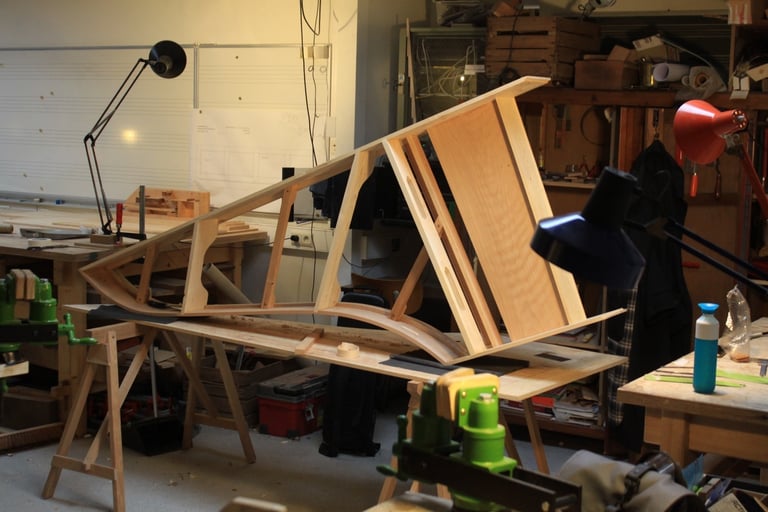

The Hamburg harpsichords of the first half of the 18th century come in a variety of shapes and sizes, but most importantly with some of the most elaborate registrations ever seen in historical harpsichord-making. Of all the historical harpsichord-making centers in Europe, Germany – and especially Hamburg – seems to be the only one where the 16’ (or ‘16 foot’) register truly thrived. Harpsichords often have 8’ registers (normal pitch) and 4’ registers (sounding one octave above normal pitch), but the 16’ register (sounding one octave below normal pitch) is quite uncommon today.
The harpsichord used for the performance today is a Hamburgian instrument of this type with a 16’ register. I built it during my Master’s at the school of instrument-making at KASK & Conservatorium Ghent. Apart from the 16’, it also has an 8’ and a 4’ register. These registers are not the same as in the original harpsichord – in other words, this instrument is a hypothetical vision of a historical Hamburg harpsichord, made by C. C. Fleischer in 1720. The original has two 8’ registers and one 4’, but extensive study of the design and historical context of the instrument made me conclude that the instrument is capable of having a 16’ 8’ 4’ registration instead of the original 8’ 8’ 4’. I then proceeded to build simultaneously two copies of this instrument, one as a facsimile of the original, and another with the hypothetical 16’ register, without making any fundamental changes to the original design and measurements of the 1720 Fleischer.

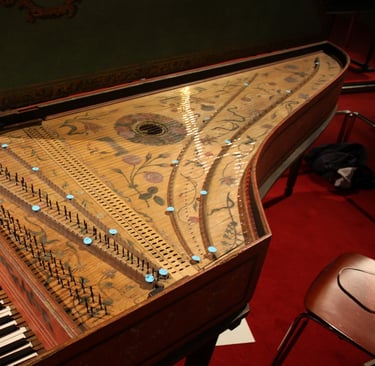
Original Fleischer of 1720


The biggest challenge I had to overcome was the stringing. In theory, when a string must sound an octave lower, it should be doubled in length. Yet this would mean that a 16’ instrument should be over 6 meters in length due to very long bass strings. Another possibility is to increase the diameter and weight of the string. Think about the low strings of the piano – instead of increasing the string lengths at the bass, they are wound with a separate copper wire in order to realize the low notes. In this harpsichord, the 16’ strings are relatively short and very thick, but not wound, because there seems to be no evidence of wound strings for harpsichords in early eighteenth-century Hamburg.
(B. Neelen)

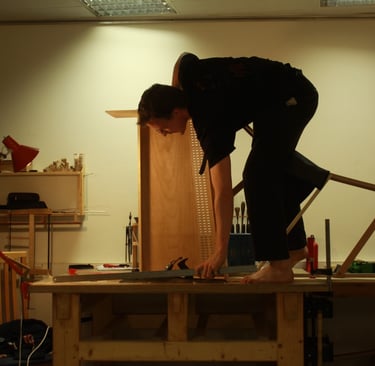
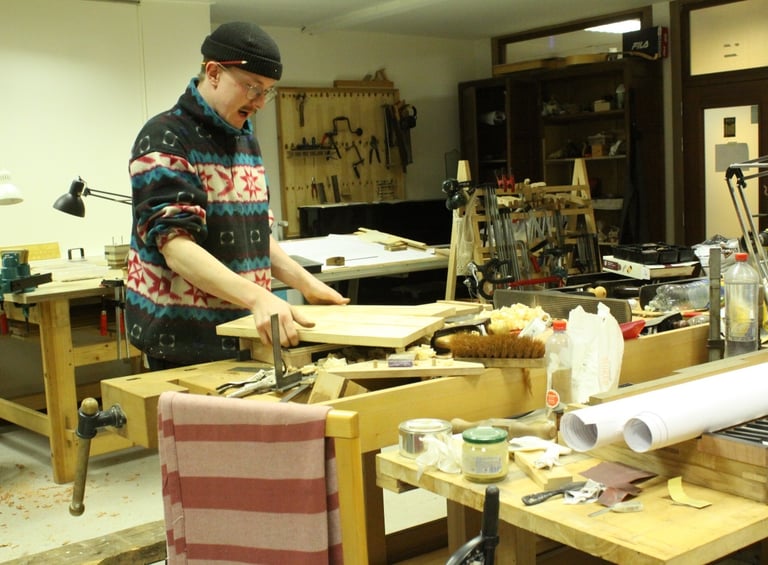

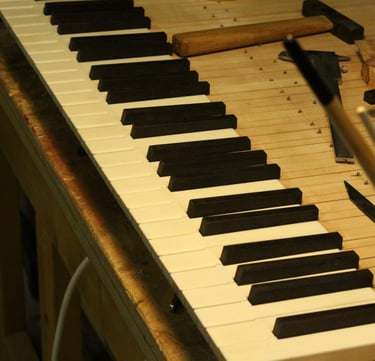

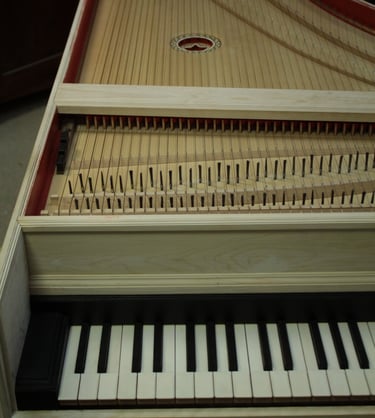

Bas building his copies
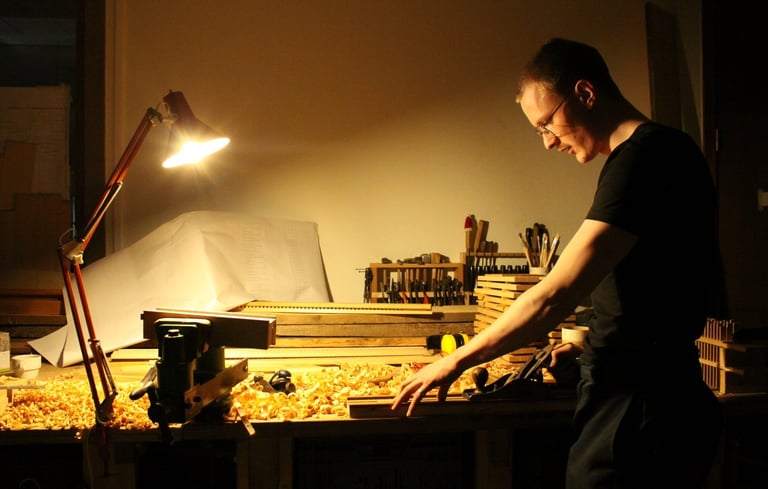

I was born and educated in Ghent, Belgium. At quite a young age I remember to often listen to Klara before bedtime, and soon I also started to play the violin when I was 5 years old. Yet, becoming a musician involved too little craft and working with my hands, and my attention shifted towards musical instrument making. In 2018 I decided to follow the instrument making course at KASK & Conservatorium in Ghent. During my studies I learned about baroque instruments, and got especially interested in keyboard instruments. I was engulfed by the early keyboard instruments and elected to specialize in building them. During the course in Gent I built multiple small musical instruments before choosing keyboards in the third bachelor year. In the final three years of the course I made three harpsichords. One after Ruckers, a Flemish harpsichord builder, and two after Fleischer, who was active in Hamburg. Hopefully many more will follow in the future, as I aspire to start my own workshop soon.
Bastian Neelen
HARPSICHORD BUILDER
